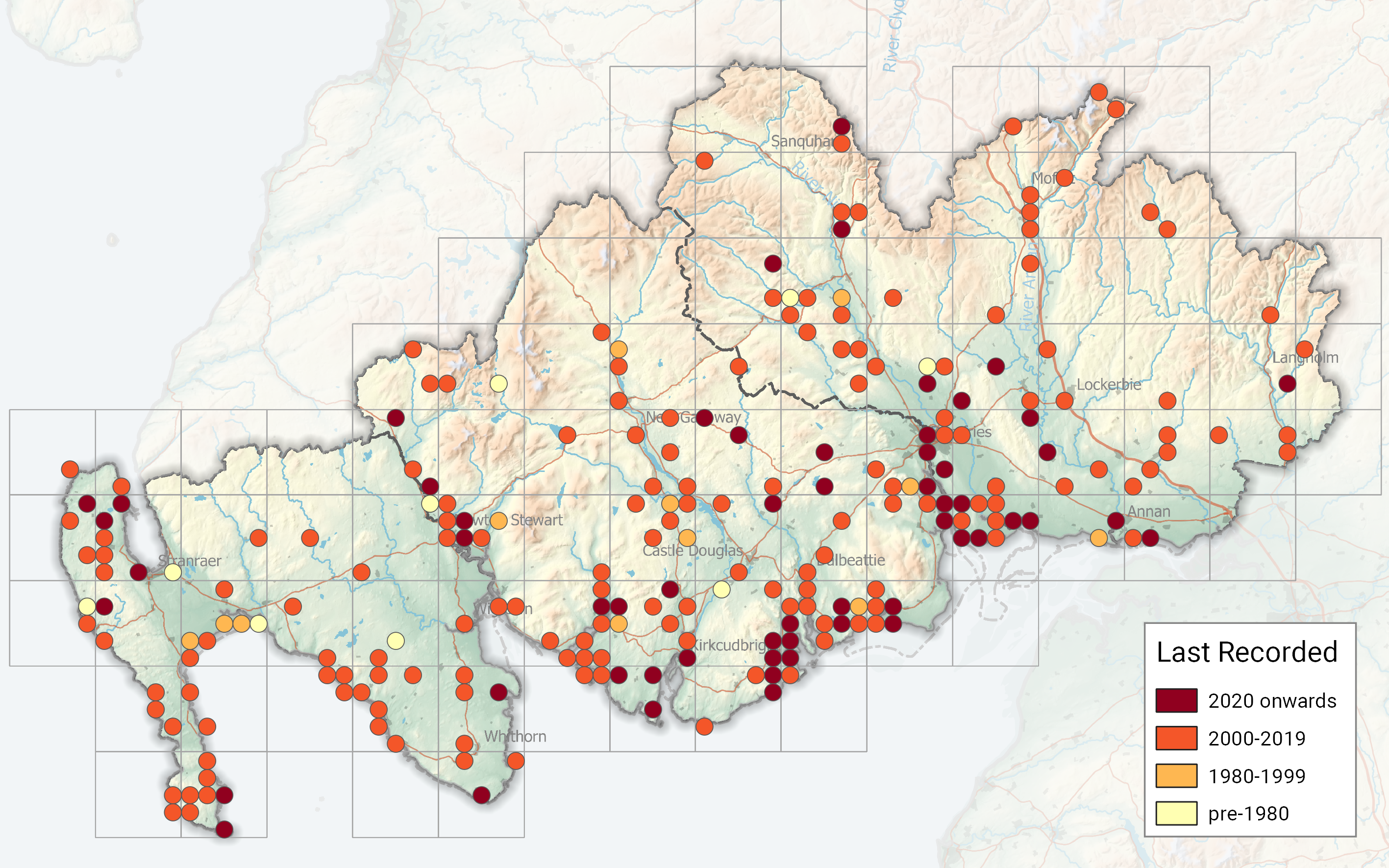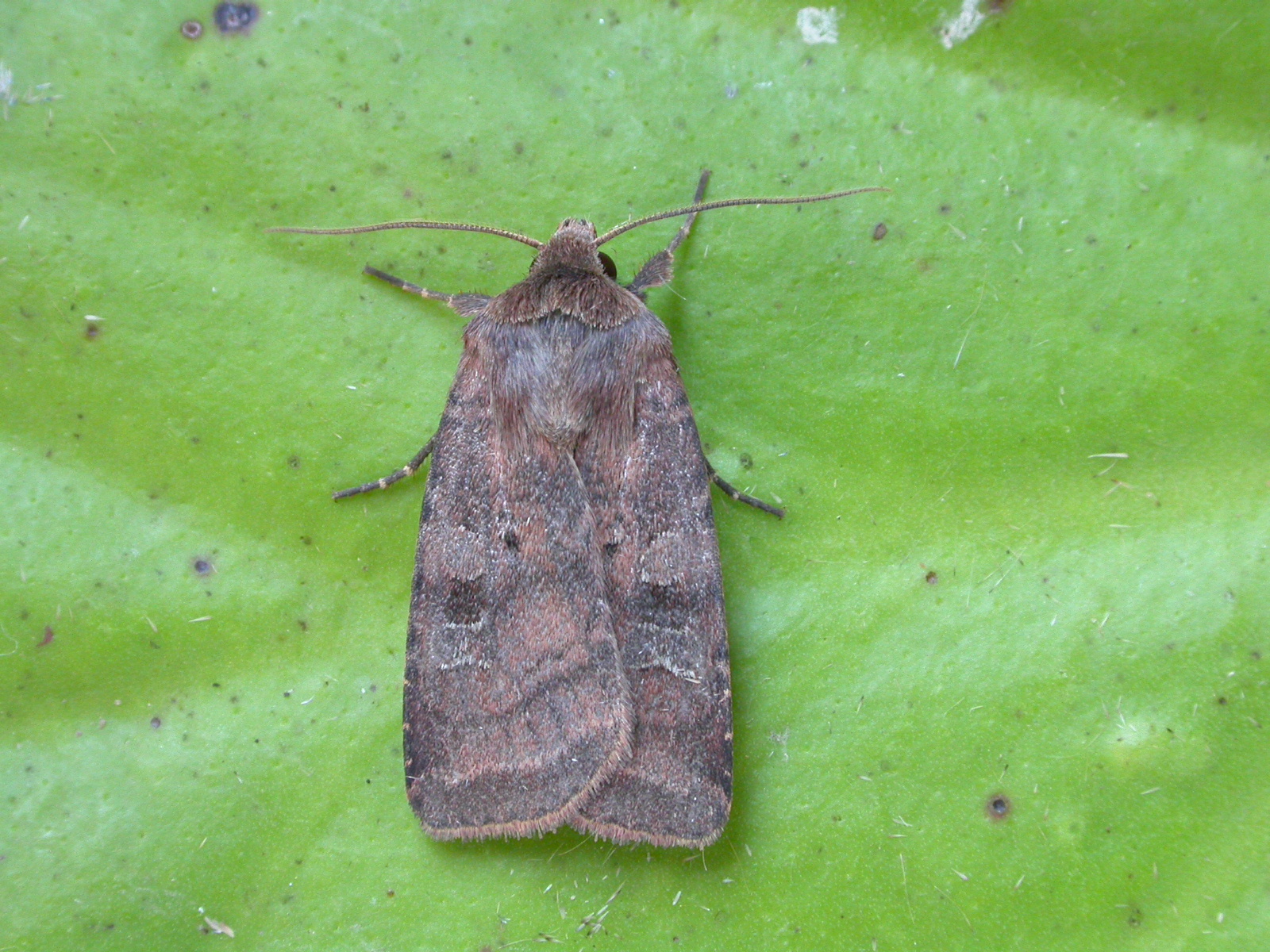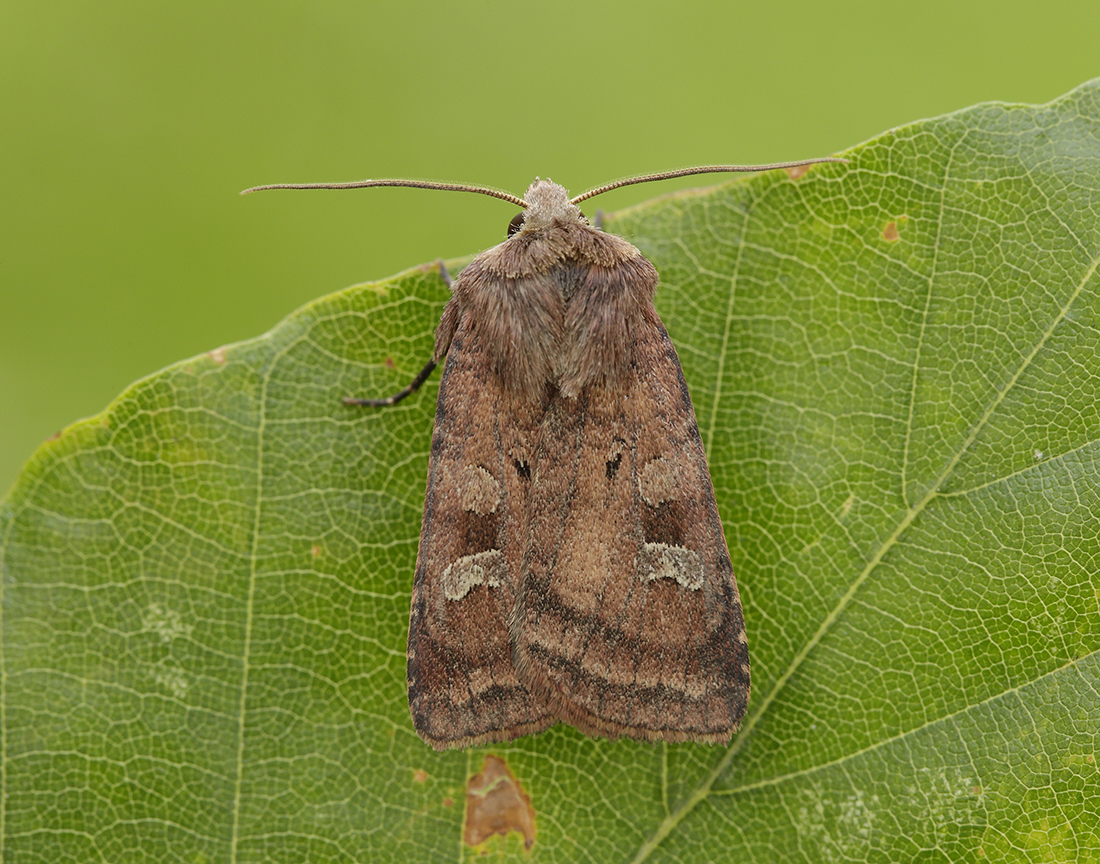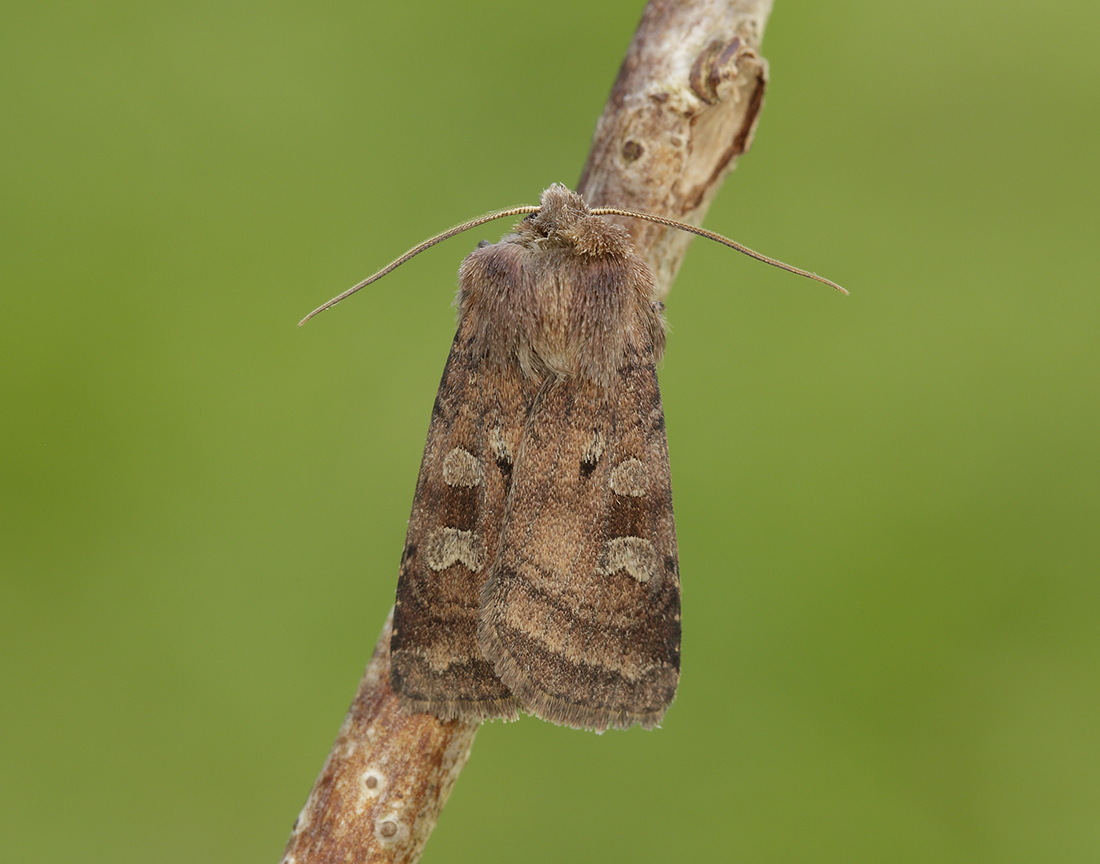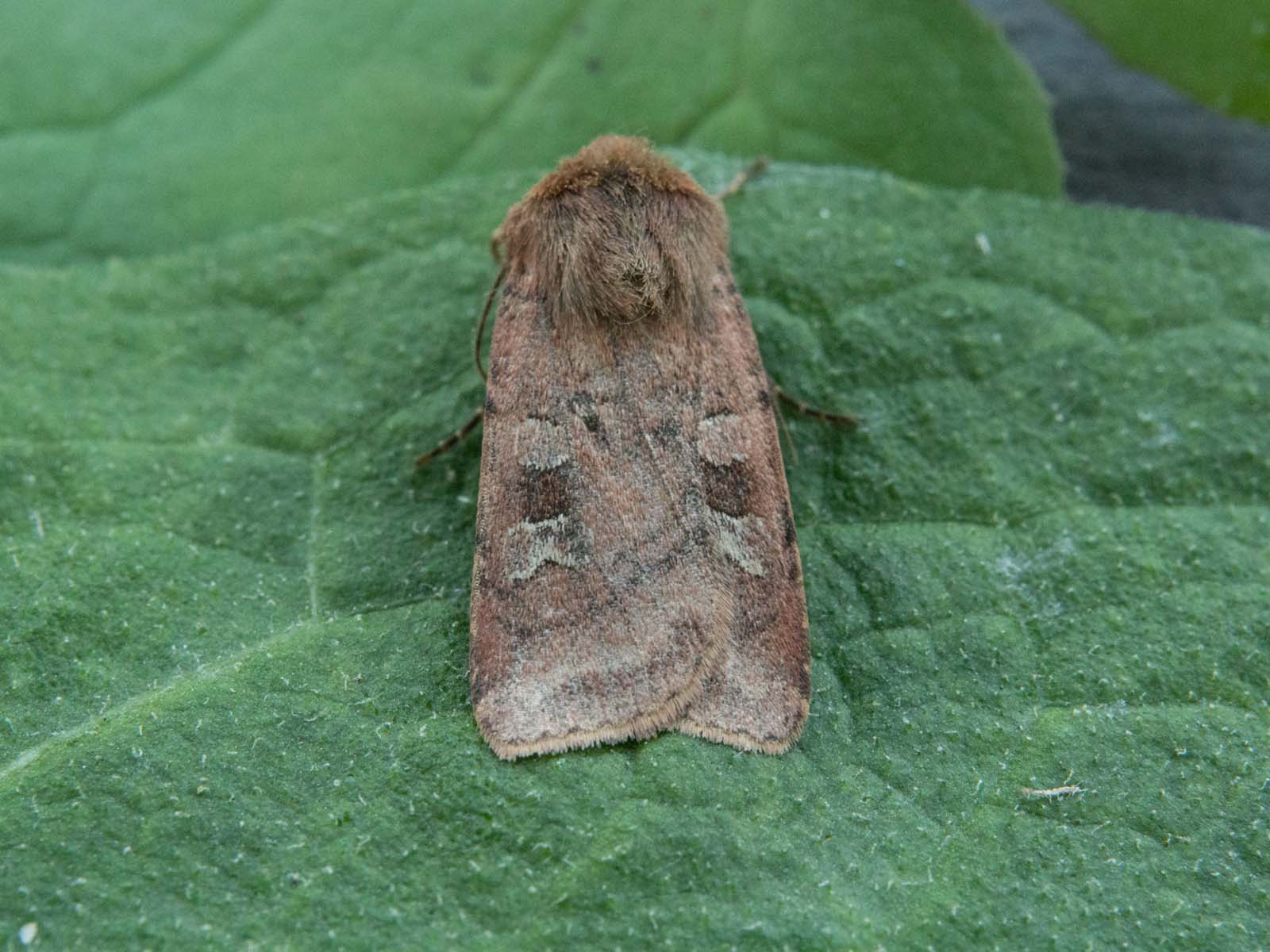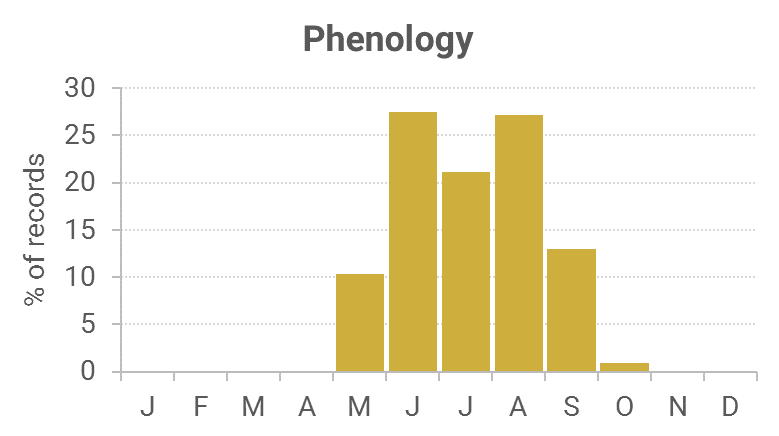Identification
Care required to separate from Ingrailed Clay, which is more marbled on the forewing. The pinkish-brown forewing is banded but variable from light to dark, with a variable reddish-brown or dark brown clouding.
Recording Method.
Attracted to light, also comes to sugar and flowers.
Life cycle
Two overlapping generations. Overwinters as a larva during September to April, and again, June and July, close to the ground. It hides by day and feeds at night, with pupation taking place underground.
Larval foodplants
Foxglove, Dandelions and docks.
Habitat
Mainly damp woodland and marshy areas, gardens, and virtually anywhere.
History
Gordon (1913) had stated it to be generally distributed in Wigtownshire, sometimes common. He had found that it came to sugar in the woods around Corsemalzie, that it came to light, and on ragwort at Glenluce golf course on 26th July 1905. Earliest date was 27th June 1899.
William Evans received specimens from Mowat, the Killantringan lighthouse keeper during 1915 to aid his insect migration studies.
Sir Arthur Duncan (1909-84) during his lifetime had found it at Tynron and Castlehill, Dumfries (all VC72).
E. C. Pelham-Clinton during the mid 1960s found it at Palnackie, Rockcliffe, Kirkbean and Caulkerbush (VC73).
During 1974-93 all seven Rothamsted stations provided over four hundred records, proving it to be widespread.
From 1992 to 2010 there were 550 records, with a good number from the regular trapped sites at Kirkton, Cally Woods, Mersehead RSPB, Kircudbright, Durisdeer and Old Torr, with the rest from widely scattered sites across the region.

